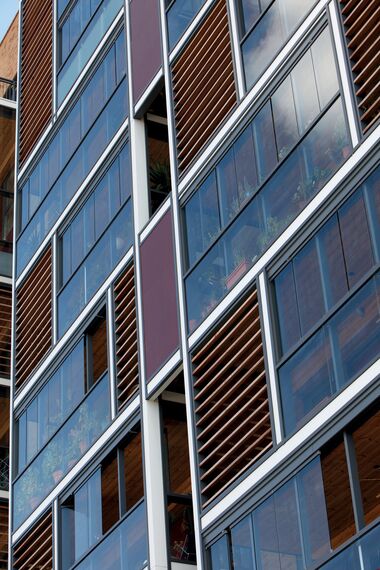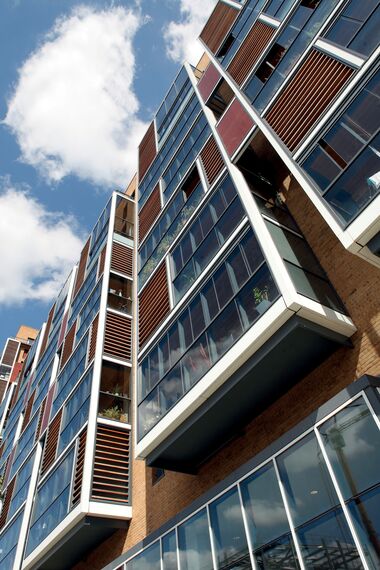- Goddard Manton
- Robin Gimblett
Dalston Lane
What has happened to Dalston? Twenty years ago local historian Patrick Wright wrote nostalgically in “A Journey Through Ruins:The Last Days of London” of a disappearing Dalston. A Dalston where property and possessions were porous and where time seemed to have slowed down or stopped altogether. Shops were stuck in the 1950s and people ambled without purpose, but they helped each other. In the final paragraphs of the chapter, called Around the World in 300 Yards, Wright warns of a sea change encroaching on Dalston’s community where buy-to-lets house a transient population.
Wright may have got his final predictions wrong, but definitely change has come to Dalston, and Londoners hear about this place on the Overground in East London more and more. Priced out of Brick Lane, Spitalfields and Shoreditch, Dalston is increasingly the home to the city’s hipsters, and so now yuppie bistros and altruistic community gardens sit alongside workmen’s cafes and builders’ merchants. There is a fight taking place here, and it is yet to see who wins.
There is, however, a visionary scheme planned for Dalston’s built environment and demographic. Part of this scheme began in physical form in 2007 with Phase 1 of Dalston Square – an urban regeneration programme instigated by Hackney Council and the London Development Agency and realised through Barratt Homes. A total of 553 dwellings are being built, many already complete, in three phases at the crossroad of Kingsland Road and Dalston Lane next to a new station. In addition to these residences, the development has incorporated a 3,200 m² public library, 2,650 m² of commercial floor space and 525 m² of community space around a 4,300 m² landscaped public square.

Winter gardens project from the west façade overlooing the public square (construction of phase 1)
The public square is hence the focus of the development and the mid to high-rise buildings run alongside its north-south route. Phase 1, Dalston Lane South, designed by Arup Associates was completed in 2010 and comprises 244 new apartments. Robin Gimblett of Goddard Manton Architects who were appointed to assist with all phases explains that the building ‘emphasises the solidity of a brick façade building, where window openings are punched into the brick skin. The unusual feature is the winter gardens, which project from the west façade overlooking the public square. The rhythm and pattern of vertical and horizontal framing is created using colour (light and dark).’ Reynaers products have been used across the whole site. The winter gardens, however, are the most interesting use. Here, the CW 50 curtain walling system has been combined with fixed glazing and fixed timber louvers. CW 50 allows a maximum penetration of light into the building and offers unlimited creative freedom. The GP 51, an innovative sliding glass system, was used for the balconies. At ground level the CW 50 system has been used for both the shop fronts and the library in addition to fixed glass and some glazed-in opening lights.
Meanwhile McAslan and Partners designed Phase 2, Dalston Junction Interchange. Here the architects designed four joined towers, three six-storey and one nine-storey, with balconies split into four bays that stretch the façade facing east over the public square or west towards Kingsland Road. The balcony, with its glazed balustrade, is reached through sliding patio doors chosen from Reynaers’ CP 130 system range. Otherwise the building is constructed from white coloured glass reinforced cement (GRC) panels and timber cladding to give the outdoor space a more homely feel. The final phase of the project is an infill block of 32 units due for completion in 2013.
The size of the scheme is indisputably large and its impact upon a struggling community cannot be underestimated. It is hard, however, to tell in which favour the Dalston Square project works. In any case, it is creating a new good quality and vibrant public open streetscape that encourages pedestrian and cycle movement with attractive residential opportunities that sell out in minutes and do help meet some of the local authority’s key housing and urban environment policy targets.
Used systems
Involved stakeholders
Architect
- Goddard Manton
- Robin Gimblett
Fabricator
- M Price Limited
Photographer
- Nick Short Photography
Other stakeholder
- Barrat Homes (Investors)
- Isabelle Priest (Authors)





